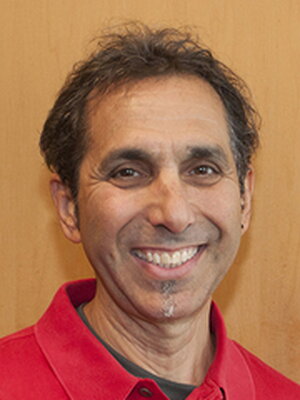
Original article: https://www.thetelegraph.com/news/article/Study-Illinois-tax-plan-would-narrow-income-gap-13730633.php
Study: Illinois tax plan would narrow income gap
John O’connor Ap Political Writer
Published 6:48 pm CDT, Sunday, March 31, 2019
SPRINGFIELD, Ill. (AP) — A graduated income tax could narrow Illinois’ growing income disparity, cut property — as well as income — tax bills and deliver billions of dollars in extra annual revenue to combat state deficits and underfunded public schools and infrastructure, a study to be released Monday shows .
The peer-reviewed exam by the Project for Middle Class Renewal and the Illinois Economic Policy Institute constructed eight scenarios based partly on progressive income tax structures among Illinois neighbors. The Associated Press obtained the study in advance of its Monday release.
Gov. J.B. Pritzker has proposed changing the state’s flat-rate income tax system, in which everyone pays 4.95 percent, to a progressive structure in which wealthier residents pay a higher percentage . It would start at 4.75 percent for the lowest wage earners, remain at 4.95 percent for those earning $100,000 to $250,000, and top out at 7.95 percent for incomes over $1 million.
Authors Robert Bruno and Frank Manzo constructed eight scenarios, drawn in part from graduated tax structures in nearby states such as Iowa and Minnesota, and tested each against five public policy goals: Cutting taxes for at least two-thirds of taxpayers, reducing property taxes by 10 percent, protecting small businesses, wiping out Illinois’ built-in $1.2 billion “structural” deficit, and boosting education and brick-and-mortar funding by hundreds of millions of dollars.
“If you keep the status quo, you will continue to perpetuate a tax process that generates revenue for all the state’s needs principally and disproportionately on the backs of lower- and middle-income earners,” Manzo, policy director for the Illinois Economic Policy Institute, told the AP. “You have no other flexibility.”
Pritzker’s measure is among the scenarios evaluated by Manzo and Bruno, director of the University of Illinois’ Labor Education Program and head of the Project for Middle Class Renewal. The study determined that the Democrat’s plan would mean a tax cut for 85.3 percent of tax filers , no change in the current liability for 12 percent of taxpayers, and an increase for 2.8 percent — those making more than $250,000 a year.
It would generate $3.12 billion extra a year, less than Pritzker’s estimate of $3.4 billion, but the authors contend it could pave the way for a 10 percent reduction in burdensome property taxes and free up $500 million a year for schools and public improvements.
Illinois’ flat tax is enshrined in the state Constitution. A change would need extraordinary majority approval in the General Assembly before the question would be put to voters — in November 2020, at the earliest. Democrats who control both the House and Senate endorse the idea of a progressive process, but Republicans strenuously oppose a switch, saying Democrats simply want a reason to produce billions of dollars more in revenue to spend without curtailing government expenditures.
Perhaps the report’s starkest revelation is an ever-widening income gap. Three decades ago, median Illinois household income was $73,000 in inflation-adjusted dollars, compared with $79,000 today. During the same period, the richest 1 percent of households saw income grow from $247,000 a year to $522,000. So low-income families pay 14.4 percent of their incomes to state and local taxes; the richest pay 7.4 percent.
“We hear policymakers consistently talking about education, small business growth, infrastructure improvement and lower taxes for working families,” Bruno said. “Our study suggests you can reach the goals that reflect each of those priorities.”
Pritzker’s office estimates that out of 6.2 million income taxpayers, 175,000 make more than $250,000 and would pay more.
Critics such as Todd Maisch, president and CEO of the Illinois Chamber, contend the rich will simply bolt the Prairie State. Bruno said there is no research to back up such an assertion. He said rich Illinoisans got rich because of the Illinois resources available to them. If the state puts additional taxes collected into education, infrastructure and lower-income consumer’s pockets, “it’s going to create opportunity, and that draws people into the state,” Bruno said.
Each of the eight scenarios meets a majority of the established policy goals. In the setup similar to Iowa’s structure, only 42 percent of taxpayers would see a tax cut, with 56 percent seeing relief in the plan based on Minnesota’s structure. But the higher rates each state imposes would also draw more revenue — adopting the Iowa plan would net Illinois $8.6 billion more annually.
The study did not address corporate taxes, except in Pritzker’s plan, which would set the rate at 7.95 percent. Pass-through business income in the other scenarios was capped at 5 percent.
The Project for Middle Class Renewal is part of the University of Illinois’ School of Labor and Employment Relations. Its mission is to investigate current working conditions and aid public policy debate with research and analysis. The Economic Policy Institute is a nonprofit, nonpartisan organization devoted to objective analysis and research which promotes the state’s economy.
The authors said their aim was to present evidence, not endorse one approach over another, but recognizing the political sensitivity of the subject, they solicited peer review of their work from three colleagues, including Penn State University economics professor Lonnie Golden and Amanda Kass, associate director of the Government Finance Research Center at the University of Illinois at Chicago.
Kass said she found no fault with the exam after reviewing clarity of definitions such as those of working- and middle-class; potential data limitations; and the soundness of the analytical approach. Golden noted that “it’s a forecast so it’s subject to uncertainty and lots of error but their methods and system seem pretty sound to me.”
The authors are “not trying to doctor the numbers one way or the other, they’re trying to create a reliable prediction of what would happen,” Golden said. “The rest is up to politics.”

